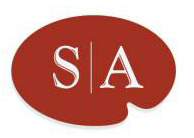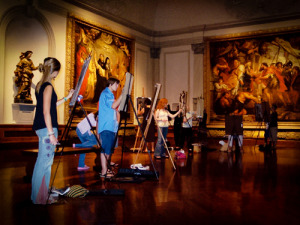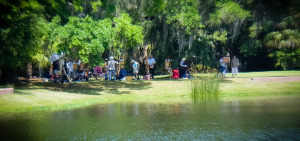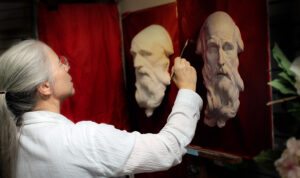“A Workshop of Illumination”

Visit Southern Atelier »
After two years in Paris, Vincent Van Gogh longed for a sunny retreat where he could “get his tranquility and poise back.” So, on February 21, 1888, he arrived in Arles with the intention of founding a workshop and school for artists, called “L’atelier du Midi,” or Studio of the South. Van Gogh had dreamt of a Utopian Artistic community that could influence the culture of France as a counterpoint to the established traditions of the north.
A “studio for a renaissance and not for decadence” would be his answer, and he envisioned it in the south or, more radically, in “the tropics,” where the artists could undertake an intense study of the sun’s illumination. Sensing a coming demand for artworks that one artist alone could not fulfill, he had in mind a classic 19th- century artistic community, “something of the same nature as the society of the Twelve English Pre- Raphaelites.” Unfortunately, Van Gogh’s Studio of the South was never fully realized, being, as it were, comprised of only three men. Yet as their artistic collective matured, style became “an arena in which tension between a communal vision and individual needs [was] played out.”
Charles Miano moved from New York to the Southern United States with similar longings as Van Gogh, for “tranquility and poise,” and with a comparable vision for the culture of his community. This vision became more of a possibility on his arrival in Florida when he realized that he was part of an influx of people who have relocated to the south for similar reasons. As Miano devoted his efforts to his studies of classic art and to his teaching, an artistic group similar to the one envisaged by Van Gogh — one that balanced a communal vision with individual needs — became a reality. His workshop, Southern Atelier, was founded in the south in an effort to enrich the established and burgeoning societies of the south of Florida and encourage artists to learn the craft of painting in order to be better able to realize their ideals.

Independent ateliers committed to Representational Painting have brought an increasing awareness of the importance of art founded on classical principles and interpreted with contemporary ideology. This has stood in stark contrast to many universities, museums and critics that, in the last century, have promoted conceptualism at the cost of realism and theory at the cost of skill. As a counterpoint to the ateliers of the north, the luminous light and subtropical climate on the Gulf Coast of Florida have proved to be an inspiration and an advantage for artists of the movement. They endeavor to improve their skills both in the studio and in plein air, working alongside some of the most distinguished artists in the country. The pictures that they create contribute to the noblest of human intentions: reverence for nature and community.


